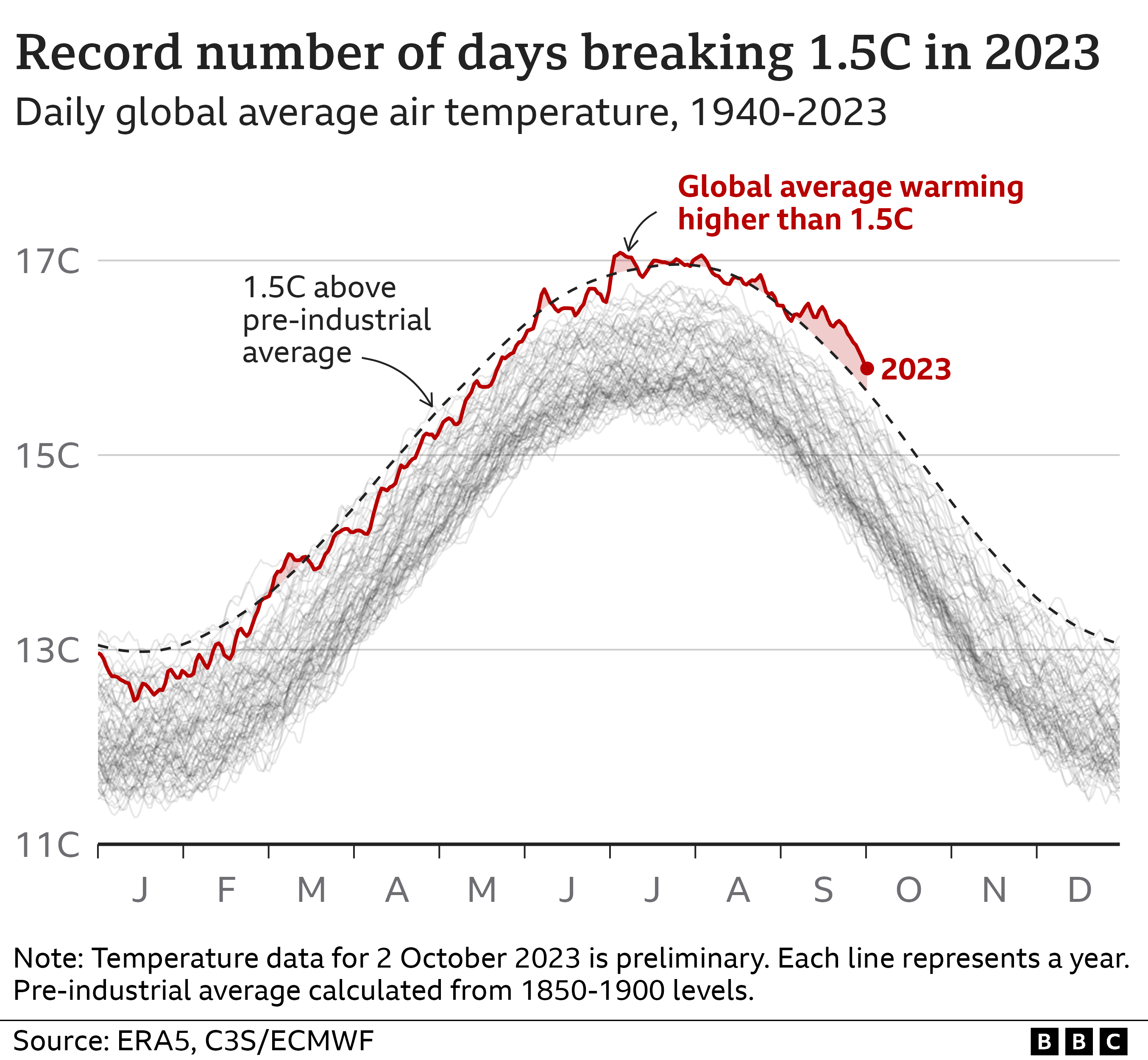The world is breaching a key warming threshold at a rate that has scientists concerned, a BBC analysis has found.
On about a third of days in 2023, the average global temperature was at least 1.5C higher than pre-industrial levels.
Staying below that marker long-term is widely considered crucial to avoid the most damaging impacts of climate change.
But 2023 is “on track” to be the hottest year on record, and 2024 could be hotter.
“It is a sign that we’re reaching levels we haven’t been before,” says Dr Melissa Lazenby, from the University of Sussex.
This latest finding comes after record September temperatures and a summer of extreme weather events across much of the world.
When political leaders gathered in Paris in December 2015, they signed an agreement to keep the long-term rise in global temperatures this century “well below” 2C and to make every effort to keep it under 1.5C.
The agreed limits refer to the difference between global average temperatures now and what they were in the pre-industrial period, between 1850 and 1900 – before the widespread use of fossil fuels.
Breaching these Paris thresholds doesn’t mean going over them for a day or a week but instead involves going beyond this limit across a 20 or 30-year average.
This long-term average warming figure currently sits at around 1.1C to 1.2C.
But the more often 1.5C is breached for individual days, the closer the world gets to breaching this mark in the longer term.

The first time this happened in the modern era was for a few days in December 2015, when politicians were signing the deal on the 1.5C threshold.
Since then the limit has been repeatedly broken, typically only for short periods.
In 2016, influenced by a strong El Niño event – a natural climate shift that tends to increase global temperatures – the world saw around 75 days that went above that mark.
But BBC analysis of data from the Copernicus Climate Change Service shows that, up to 2 October, around 86 days in 2023 have been over 1.5C warmer than the pre-industrial average. That beats the 2016 record well before the end of the year.
There is some uncertainty in the exact number of days that have breached the 1.5C threshold, because the numbers reflect a global average which can come with small data discrepancies. But the margin by which 2023 has already passed 2016 figures gives confidence the record has already been broken.
“The fact that we are reaching this 1.5C anomaly daily, and for a longer number of days, is concerning,” said Dr Lazenby.
One important factor in driving up these temperature anomalies is the onset of El Niño conditions. This was confirmed just a few months ago – although it is still weaker than its 2016 peak.
“This is the first time we’re seeing this in the northern hemisphere summer, which is unusual, it’s pretty shocking to see what’s been going on,” said Prof Ed Hawkins, from the University of Reading.
“I know our Australian colleagues are particularly worried about what’s going to be the consequences for them with their summer approaching [for instance extreme wildfires], especially with El Niño.”
BBC



























